What to Know About Common Football Injuries and How to Treat Them
It happened without warning–during a football practice or game, a player was hurt. They may not know precisely what’s injured yet, but they’re wondering how bad it is, how long they’ll be sidelined, and what they need to do to get back in the game.
At the Nebraska Greats Foundation, we understand the fear that an injury may signal the end of a football career. Fortunately, most injuries are only temporary pauses for players. We’ll explore common football injuries, recommended treatment options, and typical recovery times for specific injuries.
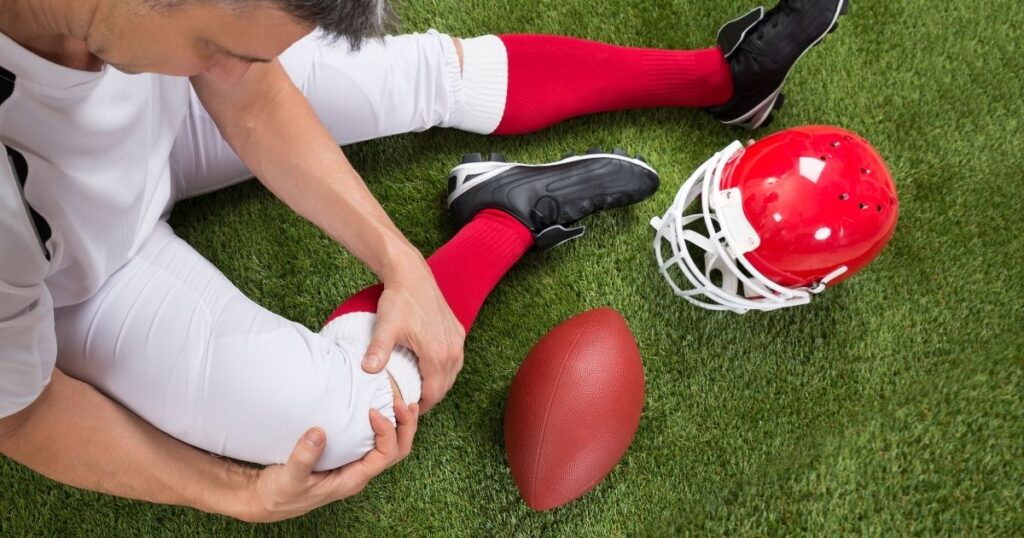
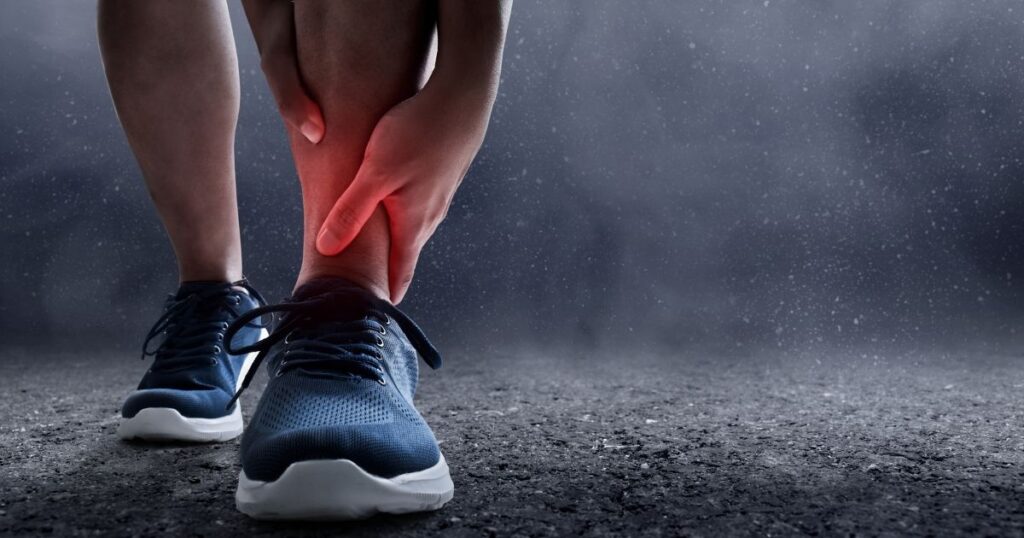
The Most Common Football Injuries
Football is a high-impact sport, and injuries can range from minor sprains to severe concussions. The degree of the injury, rather than the specific kind of injury, determines if a player can resume playing later or has to give up the sport entirely.
Let’s take a closer look at some of the most common football injuries players suffer and the treatment plans for each type of injury:
Ankle Sprains
Ankle sprains are a common football injury caused by tackles or awkward movements, resulting in stretched or torn ankle ligaments. Sprains are categorized into three grades based on severity, from mild stretches to complete tears. Common symptoms include pain, swelling, bruising, and difficulty walking.
Treatment for ankle sprains typically involves:
- RICE protocol (Rest, Ice, Compression, Elevation)
- Immobilization with a brace or cast
- Ankle and calf stretches
- Rehabilitation exercises to restore strength and stability
Severe sprains may require surgery to repair the damaged ligaments and more extensive physical therapy.
Knee Injuries
Knee injuries in football are most often caused by sudden twisting or pivoting motions, direct impacts or collisions, and forceful tackles that strain the ligaments and cartilage of the knee joint. There are several common knee injuries that football players may suffer:
1. Anterior Cruciate Ligament (ACL) Tears
The ACL is a crucial ligament that provides stability to the knee. ACL tears often happen during non-contact movements, such as sudden stops or changes in direction.
Treatment options for ACL tears include surgery followed by extensive rehabilitation to regain strength and range of motion. Rehabilitation is broken into four phases:
- Weeks 1-4: Gentle range of motion exercises, light strengthening of leg muscles, gradual weight-bearing, and crutch use for walking.
- Weeks 4-12: Progressive strengthening exercises, neuromuscular training to improve balance and coordination, and the introduction of low-impact cardio.
- Weeks 12-24: Gradual return to running, plyometric exercises to improve explosiveness, and agility drills to simulate game-like movements.
- Months 6-9+: Sport-specific drills, a gradual return to contact, and strength and conditioning to regain pre-injury fitness.
2. Meniscus Tears
The menisci are C-shaped pieces of cartilage that act as shock absorbers in the knee. Meniscus tears can occur due to twisting or direct impact on the knee.
Treatment for meniscus tears may involve conservative approaches like rest, ice, and physical therapy or more aggressive surgical intervention to repair or remove the torn portion of the meniscus. Recommended physical therapy activities include:
- Range of motion exercises to restore full knee flexion and extension.
- Strengthening exercises for quadriceps, hamstrings, and hips to improve stability and control.
- Neuromuscular training with proprioception exercises enhances balance and agility drills to improve quick movements and change of direction.
- Functional exercises for a gradual return to activity, progressing to more demanding movements, with sport-specific training.
3. Patellofemoral Pain Syndrome
Patellofemoral pain syndrome is characterized by pain around the kneecap, often caused by overuse, muscle imbalances, or poor alignment. It’s a common football injury due to repetitive running and jumping.
Treatment of patellofemoral pain syndrome focuses on addressing the underlying causes using the following methods:
- Strengthening exercises include quadriceps sets, straight leg raises, wall sits, clamshells, and hip abductions.
- Stretching exercises for hamstrings, calves, quadriceps, and iliotibial (IT) bands.
- Correcting biomechanical issues via orthotics, gait retraining, and taping.

Hamstring Strains
Hamstring strains involve tearing the muscles in the back of the thigh. These strains often occur during sprinting or sudden acceleration.
Treatment for a hamstring strain typically includes:
- RICE protocol.
- Pain management with OTC painkillers and topical anti-inflammatory creams or gels.
- Gradual rehabilitation stretching to restore flexibility and exercises in hamstrings, glutes, and quads.
Shoulder Injuries
Shoulder injuries in football are often caused by forceful tackles or falls that cause the shoulder joint to move beyond its normal range. These result in dislocations, separations, or tears. Repetitive throwing motions can also cause inflammation and tears in muscles and tendons, making them one of the most common injuries in football quarterbacks.
The two types of shoulder injuries most seen in football are:
1. Acromioclavicular (AC) Joint Separation
The AC joint is at the top of the shoulder, where the collarbone meets the shoulder blade. AC joint separations often result from a direct blow to the shoulder.
Treatment for AC joint separations depends on their severity. Mild cases may only need rest and ice, while severe cases might require surgery and physiotherapy.
2. Rotator Cuff Tears
The rotator cuff is a group of muscles and tendons that stabilize the shoulder joint. Rotator cuff tears can occur from overuse, repetitive motions, or acute injuries. They’re common injuries among quarterbacks.
Rotator cuff tear treatment options include rest and physical therapy such as:
- Range of motion exercises, and passive range of motion performed by a therapist to improve shoulder mobility.
- Stretching exercises to increase shoulder flexibility.
- Strengthening exercises to build strength in the shoulder muscles.
- Scapular stabilization exercises to strengthen the muscles supporting the shoulder blades.
In more severe rotator cuff injuries, surgery and extensive rehabilitation therapy are required.
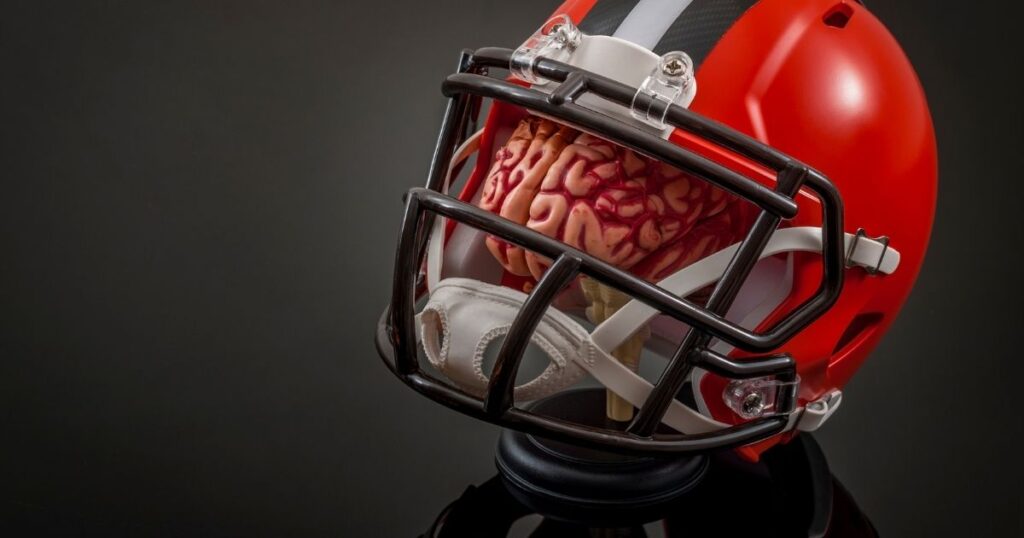
Concussions
Concussions are traumatic brain injuries that can result from a direct blow to the head or body. They can cause symptoms including headaches, dizziness, confusion, and memory problems.
Concussions can range from mild to severe and require management and treatment that differs from other kinds of football injuries. Recovering from a concussion involves the following:
- Physical rest to avoid strenuous activities, limit exertion, and allow for plenty of sleep to protect the brain from further stress or injury.
- Cognitive rest minimizes brain-stimulating activities like screen time, schoolwork, and excessive noise, allowing the brain to heal.
- A gradual return-to-play protocol carefully monitored by a healthcare professional to ensure the athlete’s brain has fully recovered before they return to football:
- Stage 1: Complete physical and cognitive rest.
- Stage 2: Low-intensity aerobic exercise.
- Stage 3: Running drills without any contact.
- Stage 4: Participating in practice drills with teammates without contact.
- Stage 5: Returning to full-contact practices.
- Stage 6: Cleared for full participation in games.
Open communication with healthcare professionals and careful monitoring are key throughout recovery. By completing a full rehabilitation program, most athletes can safely return to their sport and have a successful athletic career.
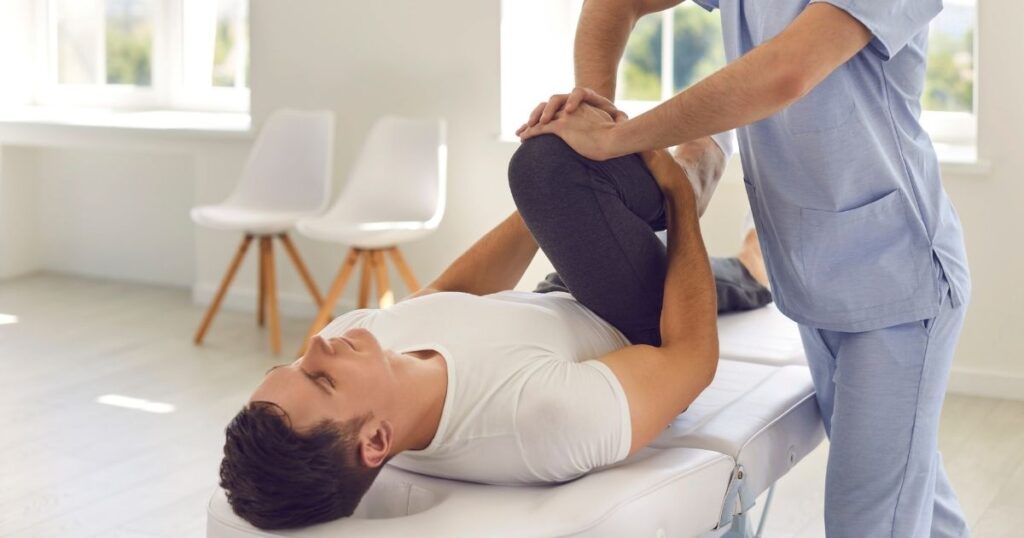
Typical Sports Injury Recovery Timeframes
When a football player is injured, they often want to know when they can play again. While individual recovery times vary, here are some general estimates for common football injuries:
- Ankle Sprains: 2-6 weeks
- Hamstring Strains: 2-8 weeks
- ACL Tears: 6-12 months
- Meniscus Tears: 4-8 weeks (non-surgical) or 3-6 months (surgical)
- Concussions: Varies greatly, but typically 1-4 weeks
Recovery time varies depending on several factors, including the type and severity of the injury, the athlete’s healing ability, and how closely they follow the rehabilitation plan.
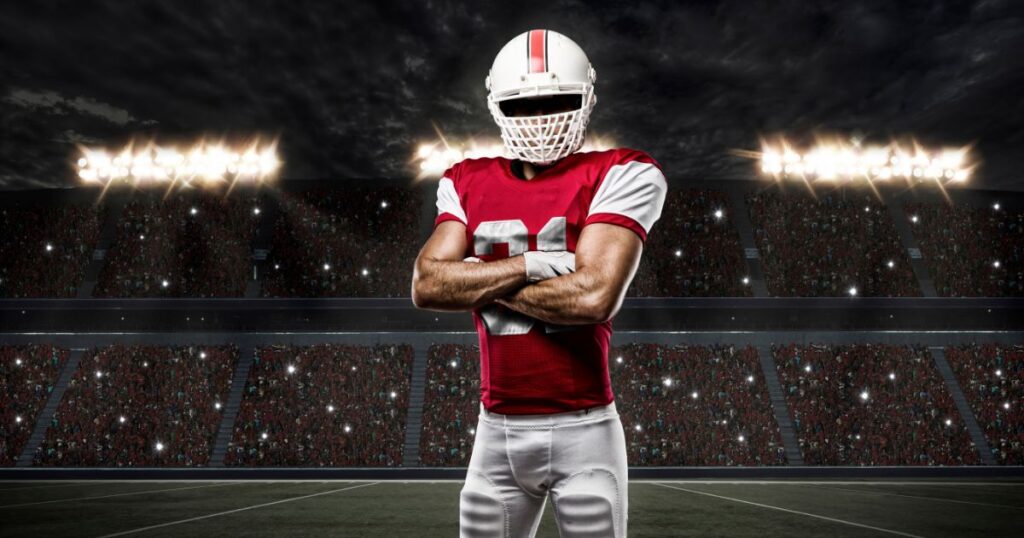
The Nebraska Greats Foundation Helps With Football Injuries and More
The Nebraska Greats Foundation is committed to supporting Nebraska athletes through all stages of their athletic journeys. We assist athletes facing sports injuries, including common football injuries. We’ll be there to help them step back onto the field or provide resources for the transition to post-sports life.
If you’re a current or former Nebraska athlete facing challenges due to a sports injury, contact us for help.
You can also support our mission by donating to our foundation. Together, we can make a difference in the lives of Nebraska athletes.
